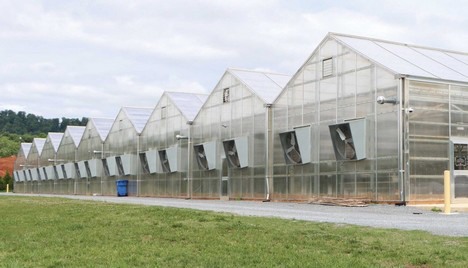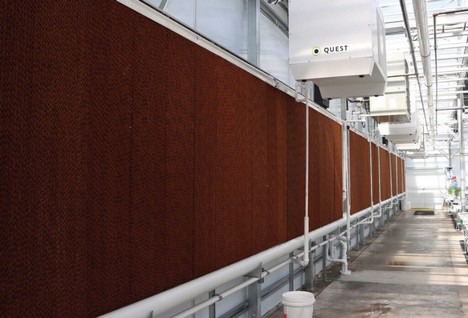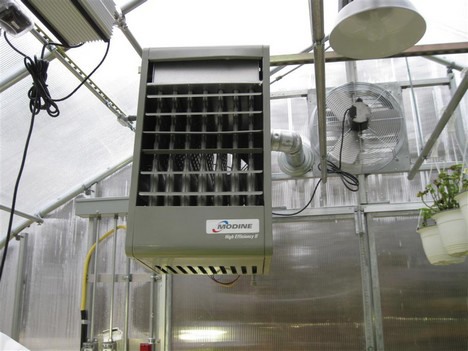With all the different ways to tackle crop production, it can be difficult for operations to know if they’re reaching their full potential. Every approach has its own advantages, but greenhouses have become the go-to option for commercial growers and can offer the best chance of maintaining a viable business over time.
Greenhouses allow growers to combine the climate control capabilities of indoor growing with the cost-savings of sun-grown crops, helping them increase their bottom line. With rising energy costs and increasingly tighter margins, these features have become more important than ever for modern operations.

What are the advantages of using a greenhouse?
The most notable benefits of a greenhouse are increased production, short and long-term cost savings, control over temperature and humidity, automation potential, and design customization. Compared to indoor grow rooms or outdoor cultivation, greenhouses offer a more sustainable and efficient approach to growing plants.
With the right materials and design, growers can gain complete control over their greenhouse environment year-round. They can also tailor the structure around their exact needs based on different factors. This includes the location of their operation, the scale at which they grow, and the types of plants they produce, from organic vegetables to exotic plants.

Increased production
The ability to grow more frequent, high-quality harvests without interruption is one of the most significant benefits of a greenhouse. In addition to faster growing cycles, operations can continue production year-round, regardless of the weather conditions outside. This longer growing season allows greenhouse operations to maximize their output over time, especially when compared to their outdoor counterparts.
Cladding is also a key proponent for increasing production in a greenhouse. Indoor facilities are typically set up in warehouses, which provide limited benefits, while outdoor fields are fully exposed to direct sunlight and unfavorable weather. With the right cladding, greenhouse growers can provide crops with an optimal level of light transmission and diffusion, blocking harmful UV rays and promoting superior plant growth.
Additionally, greenhouses make it easier to improve plant life and eliminate common issues, like pests and diseases. With an appropriate plan in place for IPM (Integrated Pest Management), fewer plants will be damaged, and growers can get more valuable crops to market.

Cost savings
When growers look at the benefits of a greenhouse, the potential cost savings are undeniable. These savings are largely generated by a dramatic reduction in energy use, leading to lower monthly utility costs.
One of the benefits of a greenhouse that makes them inherently more energy-efficient than indoor facilities is the significantly reduced need for lighting. Greenhouses utilize natural light from the sun to provide crops with sufficient lighting all throughout the day.
If needed, growers can still employ small amounts of artificial lighting, like energy-efficient LEDs. This allows them to optimize plant growth, especially in the wintertime, when there are fewer hours of daylight available.
Depending on their region, operations can also set up a greenhouse with sufficient passive ventilation. Passive ventilation provides valuable air circulation that improves plant health without using large amounts of energy.
Energy costs can be reduced through other systems as well, like efficient irrigation setups or energy curtains. Energy curtains are a valuable tool for trapping heat inside a greenhouse during winter, keeping the interior warmer through the night and mitigating heating requirements.
Temperature and humidity control
Temperature and humidity control are essential benefits of a greenhouse and play a huge role in the growing environment. With a greenhouse, operations can achieve the same level of temperature control that indoor growers are accustomed to.
To combat high temperatures and humid conditions, many greenhouses feature naturally high roof peaks and roof vents that allow heat and moisture to escape. This is a form of passive ventilation, which can be combined with active ventilation systems to achieve sufficient cooling and remove moisture from a greenhouse. Blending the two gives growers an effective way of dealing with both temperature and humidity issues.
Growers in warmer climates can also utilize evaporative cooling to manage the heat within their structure. This cooling method offers a powerful and energy-efficient way to lower greenhouse temperatures, even in larger grow spaces.
In colder regions, a properly sized, energy-efficient heater will help maintain uniform temperatures and keep yields consistent. For more information on how to properly size a greenhouse heating system for optimal temperature control, read this past blog.
Automation
With today’s growing technology, one of the greatest benefits of a greenhouse is the potential to incorporate automated systems. Automation allows growers to limit energy waste and the labor power it takes to run their greenhouse operation while still improving crop quality.
From irrigation to ventilation systems, just about every feature of a greenhouse can be automated and streamlined. Best of all, growers can use greenhouse controllers to synchronize their environmental control equipment. This lets them manage their entire operation from one interface, drastically reducing labor requirements.
For growers who need complete photoperiod control, automated light deprivation systems can even be integrated into their structure. This advantage used to be limited to indoor growers, but the ability to automate light dep has leveled the playing field and become one of the major benefits of a greenhouse.
Custom benefits
Indoor facilities and outdoor settings are essentially set in stone, but a greenhouse lets growers customize their production space down to the smallest detail. From the structural materials to the systems inside, the greenhouse’s design can be tailored around any operation’s individual needs.
With assistance from a Greenhouse Specialist, growers can get the most out of their budget and take full advantage of the benefits of a greenhouse. From concept to completion, operations gain access to in-house services, like consulting and design, financing, and custom engineering. This helps them end up with a high-performing structure that is designed specifically for their region and production goals.
Each year brings new challenges and increased competition, making the benefits of a greenhouse more difficult to ignore. Operations have to find ways to maximize output while simultaneously reducing costs and conserving resources. Overall, greenhouses offer a more sustainable, cost-efficient way for growers to achieve high-quality harvests and maintain a successful operation over time.
For more information: Growers Supply
Growers Supply
800.476.9715
www.GrowersSupply.com
www.GrowSpan.com
